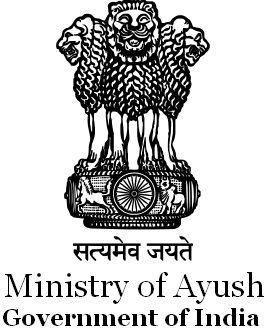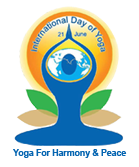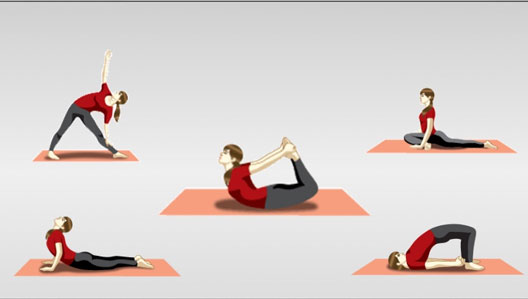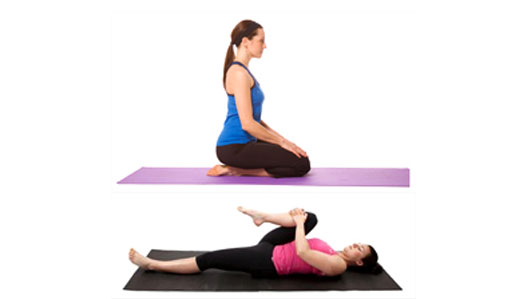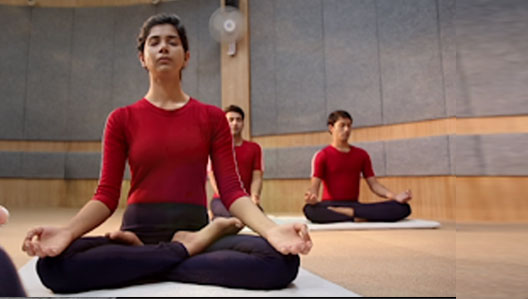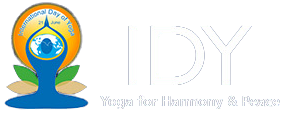Scientific Validation of Yoga Asanas
2021-05-24
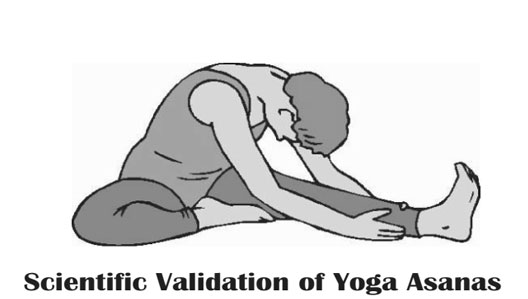
Yoga is a all-inclusive and specifically fine tuned process of uniting the individual consciousness with the omnipresent enormous consciousness. Accepting the spiritual nature and philosophy of yoga is certainly more important than its gross relevance pertaining to the physical exercises, postures and breathing patterns. With their perfection in yoga, the yogis control the agile activation of the body and the mind by relaxing the body completely and the mind in a calming state of peace. It eliminates all physical and mental fatigue and help focusing the consciousness force into the deeper centers of the internal self. This eventually directs to a state of trance that enables spiritual elevation and renovation of life as a whole. The realization of (Brahma Vidya) ultimate knowledge becomes possible only through spiritual enlightenment and transcendent thoughts emanating from the awakened self.
As mentioned in the Upanishads, the principles of yoga deal with this awakening of the inner realms of soul. Yoga is a complete discipline of strengthening and improving the physical, mental and spiritual state of being. The science of yoga pertaining to the physical aspects of life focus at improving the health and augmenting the strength of the body. The initial stage of yoga sadhana deals with the practices of asanas, pranayama and several yogic- kriyas of refinement. The physical exercise specific postures of the body practised through different Asanas, bandhas and mudras harmonies the intra-body and brain functions and facilitate activation of otherwise dormant vital energy centers, as one makes progress in yoga. The exercises ( kriyas) like Neti, dhouti, basti, nauli, vajroli, kapalbhati, etc taught under "Hathayoga" for internal purification of the body - system also fall under this category. The discipline of fasting, austerity, penance, etc help in cleansing the body and the mental domains and help in enhancing self - control.
Here highlighting some of the findings of the pioneering research works that had helped validation and recognition of this prehistoric science in the modern world, everyplace laboratory experimentation, demonstration and verification as per the current trend largely happened to the criteria for acceptance of validity of truth of concept or a theory.
Dr. R Nagaratna, from SVYASA University has achieved remarkable success in curing hundreds of patients of various cardiovascular and chest related problems with the help of yogic asanas and kriyas. Her success in healing the patients of asthma by making them practice specific pranayamas and breathing exercises rather than using any medication which has given trusts and direction to the treatment of this incurable disease/disorder. Pranayama is basically a practice of enhancing and harmonising the flow of prana (vital energy) within the body through controlled breathing and concentration. Purification the bronchial tube, enhancing the lungs capacity and balancing the inflow of oxygen and outflow of carbon dioxide.
Dr. Dharmvir N. Varandani and Swami Anand were the 1st few researchers of the modern times who had reported the findings of systematic research on the effects of yoga in treatment of diabetes mellitus. They had presented the results of their preliminary experiments in a national scientific Congress organized by the Central Council of Research in Indigenous medicine and homoeopathy.
Large clinical study was carried out at the "Yogic Treatment cum Research Centre" Jaipur for a three month period on 283 diabetic patients from various age groups. The patients were given balanced diet consisting of 98 fm fats, 400 gm carbohydrates, 100 gm proteins , with the total intake of around 2900 calories. Their urine, blood sugar, weight, glucose, ECG etc were tested sequentially during the period of study. The patients were practicing sarvangasana, halasana, mayurasana, padahastasana, uttana padasana, sirshasana, janusirsasana, shavasana, pavanmuktasana, etc, along with some essential kriyas each morning and evening under the proper guidance. There was also a slot for daily prayers, devotional practices and some meditational sadhanas in their routine.
The results showed significant improvement after three months in 52% of the patients and most of them had been totally cured. The remaining patients are either in acute state or having diabetes for more than half of their age. Continuing the treatments for few more days showed positive effects.
Dr. Lakshmikanthan's article on"Yoga and The Heart" was published in "Yoga Life" annual issue in year 1977. In this article he had reported the findings of his studies on two groups of patients of hypertension in the Government hospital on which the allopathic medicines where largely ineffective. The patients in the first group also had weak hearts or some cardiac problems along with blood pressure. Those in the second group had healthy hearts.
The patient in the first group where made to practice shavasana by keeping soft pillows below their legs . Second group were given extra practices of sarvangasana, halasana and viparitkarni mudra. The immediate benefit noted in both the groups was that the patient felt generally relaxed and started getting sound sleep. The healing effects of normalizing the B. P. were quite significant in the second group. Many in the first group began to respond positively to the medicines.
Excellent effects of Savasana on cardiac ailments where also reported by Dr. K. K. Date in a similar studies. Dr. Shrinivasan of Patna (India) and Dr. Benson of USA had recorded positive effects of yogic meditation on patients suffering from different kinds of heart diseases.
Asanas are scientifically adviced modes of physical exercises that work on the mind body system in a natural way. For example, the stretching and compression of the muscles, these practices regulate the blood flow in a balanced manner, inducing energetic freshness in the body components; it also increases the flexibility of the muscles. The other fitness exercises e. g. Danda- baithaka and some of the aerobics might give rapid results but these usually harden the muscles and there is a risk of wear and tear into them due to excessive pressure. Another advantage of yoga asanas is that if any asana corresponds to forward bending, there is also another in the same set of asanas, which requires backward bending and thus it makes a perfect sequence in terms of biomechanics as well.
Sirsasana is known as the best in terms of combined benefits of physical and mental health. However, it should be practised only after sufficient training and having experience of other asanas. The first scientific study on this higher level asana was stated that sometime before 1980 by Dr. Alexandro W. Julian, Director of the Thord Clinic of Meditation, Poland. He had measured the affect of sirsasana on different organs and physiological body functions on a healthy subject with the help of X-ray, ECG, EMG etc.
The person under gone for study had good mental concentration and experience of practicing this asana. He was made to do this exercise with empty stomach for 2 to 3 minutes followed by shavasana. The important parameters square of sold before, in between and after the asana practice. Instant balancing of serum level in the blood, regulation of blood flow, increase in WBC count, etc where the immediate positive results recorded. These were indicative for the prevention of coronary blockage and heart attacks and augmenting body's resistance against diseases. The x-ray defines broadening of lung volume without any pressure on the heart; the pulmonary test showed 33% enhancement in the amount of oxygen consumption during inspiration and 10% decrease in its changes of expiration with carbon dioxide. The respiration rate had decreased to normal. These further confirmed relaxation of the heart and improvement of vital capacity.
The result of control clinical study on the effect of Bhujangasana were presented in 1978 during the "First conference on the Application of Yoga in Rehabilitation Therapy". This asana was found to reduce stress and normalize the blood pressure.
The studies of Kaivalyadham, Lonavala (India), had reported sarvangasana and mayurasana as most suitable for maintaining normal health and fitness. These asanas were also found easier to practice and more effective as compared to the other asanas on anaemic or physically weak patients.
The foundation laid by the studies of previous year had not only proved the scientific validity of Yogasanas, but also covered the way for advanced research across the globe on yoga therapy for treatment of psychosomatic disorders. This also enlarges the scope of application of yoga for well- being of the masses. Incorporating these apparently simple practices in day-today life indeed bestows amazing benefits upon physical and mental health.

